After one year intense and careful preparation, the 5th International Conference on Flexible and Printed Electronics (ICFPE) was successfully held in Beijing on 21-23 October 2014. The conference was organized by Beijing Institute of Graphic Communication and hosted by Beijing University of Technology. Co-organizers of the conference included the Suzhou Institute of Nanotech and Nanobionics, Changzhou Institute of Printed Electronics Industry, Institute of Chemistry, Organic Electronics Association in Germany and NanoGlobe of Singapore. China Youth Travel took care of the conference logistics. The General chair of conference was Professor Zheng Cui who is the Director of Printable Electronics Research Center, Suzhou Institute of Nanotech and Nanobionics, Chinese Academy of Sciences.
Total 237 abstracts were received from 20 countries. 222 abstracts were selected. The conference had 19 oral sessions with 99 oral presentations and a poster session with 123 posters. 5 plenary speakers were invited, who are world renowned experts in flexible and printed electronics, including Professor John A. Rogers from University of Illinois at Urbana Champaign, USA, Dr. Kazumasa Nomoto who is the Senior General Manager of Device Development Division in Sony, Japan, Professor Andrea C. Ferrari of Cambridge University, UK, who also serves as the Chairman of Executive board for the European Graphene Flagship Project, Dr. Sang-Yoon Lee who is the Senior Vice President of Samsung Electronics, Korea, also serves as the Leader of Korea National Project ’the total solution for printed electronics’. Professor Cao Yong from South China University of Technology, an Academician of Chinese Academy of Sciences, was also one of the plenary speakers. In addition to plenary session, oral sessions and poster session, the conference organized 14 invited sessions with 28 invited speakers from China and overseas, who presented their latest progresses in their research fields. To help young researchers and people who are new to the fields, the conference organized a Master Class the day before the formal start of conference, with 4 lecturers talking about the basics in organic photovoltaic, printed electronic devices, printing machines and design for printed electronics. In the poster session, three posters were selected with the Best Poster Award. Apart from academic presentations, there was a trade show, with 11 companies and organizations setting up exhibition booths alongside the conference.
Although it was the first time the ICFPE was held in China and the organizers did not have experience relevant to running large international conference before, the conference has achieved a great success. The technical program was orderly executed and every detail of logistics was paid attention to. The structuring of technical program and the organization of conference were widely praised by the participants. Representatives from Korea and Japan who were organizers of past ICFPE conferences came to the conference chair to congratulate him on the success of this conference. Dr. Simon Ogier, who is the R&D manager of UK national printed electronics Center and an attendee of the conference, sent an e-mail to Professor Zheng Cui after going back to UK, saying “Dear Zheng – I would like to congratulate you on a very successful conference which I enjoyed very much – continuing the good tradition of ICFPE – well done to you and the other members of the organizing committee.”
Flexible and printed electronics are rather new fields in China. In particular, the term of “printed electronics” was almost unheard of in China five years ago when Professor Cui setup the first research center dedicated to the R&D of this technology. He admitted that when he volunteered to organize the 5th ICFPE in China two years ago in Tokyo at the 3rd ICFPE, he was not quite confident that the conference would be as successful as previous ones because there were not many people actually working in this field in China. Two years on, the situation has changed greatly. Helped by the worldwide hypes of 3D printing and wearable electronics, more and more people in China start to pay attention to flexible and printed electronics. An increasing number of researchers start to get involved in the technology. The industry is also watching the development in the field. As the result, the 5th ICFPE has drawn wide participations from many sections of research community and industry in China. Among the 237 submitted abstracts, 138 abstracts were from mainland China. Among the 351 participants, 209 were from mainland China, which was truly beyond the organizers’ expectation.
The motive to have the 5th ICFPE held in China, as Professor Zheng Cui conceived, was to use it as a platform and an opportunity to let the Chinese researchers and industrialists see the worldwide development of flexible and printed electronics, and to let the world see what China has done and what are the opportunities of business and technology collaborations lying ahead. Now with the success of 5th ICFPE the goal has been achieved. We have every reason to believe that flexible and printed electronics will have rapid development in China in the coming years. With the sheer size of population, the potential market for flexible and printed electronics products in China will be huge. China as the world largest manufacturing base for nearly everything, particularly in sectors such as flat panel displays, solar cells, printed circuit boards, etc., will become one of the major driving forces to push the technology from research to commercialization. The Chinese researchers and industrialists will remember that the 5th ICFPE held in China in 2014 has played a part in the process.
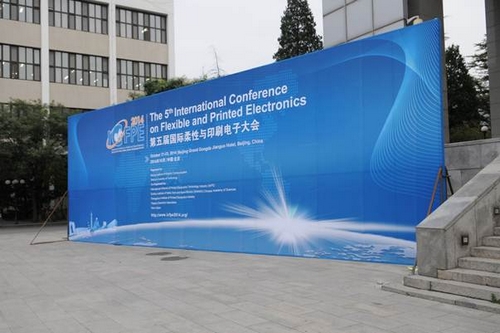
The venue of plenary session of ICFPE 2014
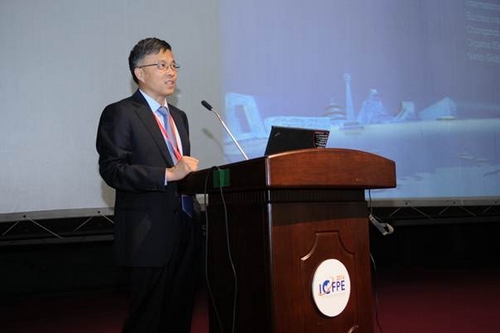
Professor Zheng Cui, the general chair of ICFPE 2014
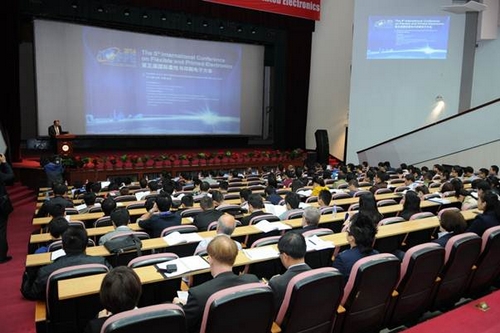
The plenary session of ICFPE 2014
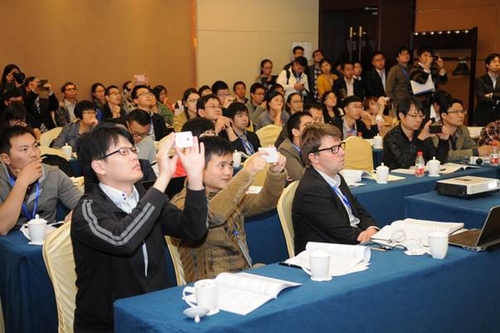
An oral session of ICFPE 2014
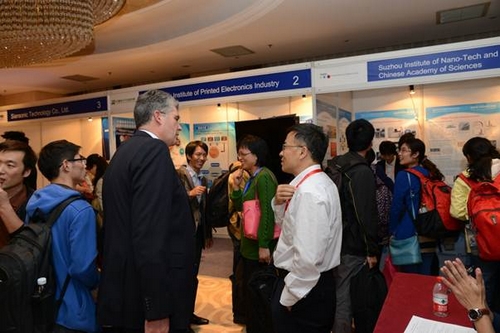
Exhibition area of ICFPE 2014
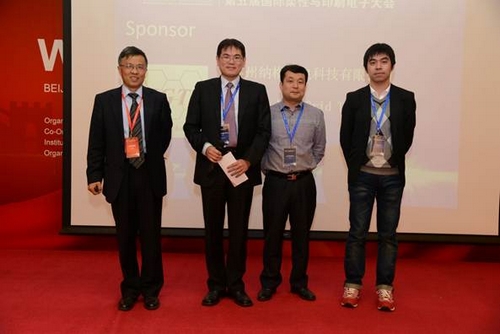
The general chair with the best poster award winners
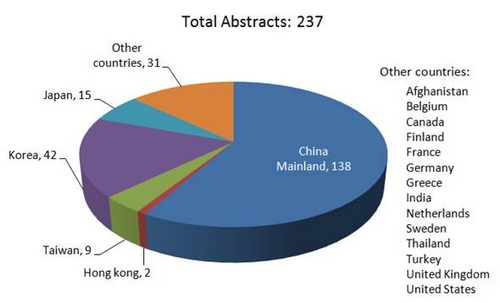
Statistics of submitted conference abstracts
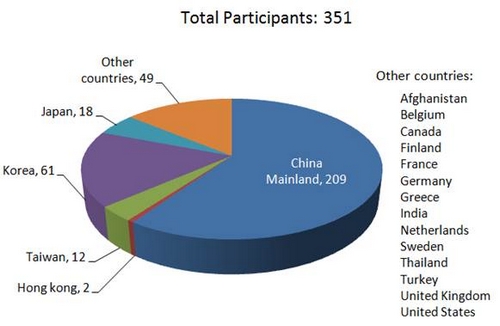
Statistics of conference participants

